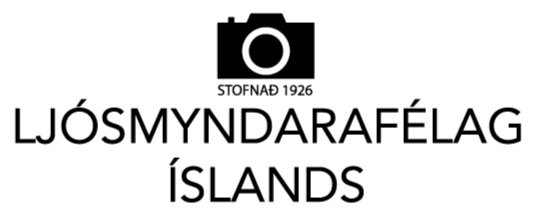The Icelandic Professional Photographers Association
Icelandic Professional Photographers Association founding members in 1926
It all started in 1926 when…
…few photographers founded LJÓSMYNDARAFÉLAG ÍSLANDS / Icelandic Professional Photographers Association on 7th January 1926. Few photographers had studied photography abroad and began practicing their business in Iceland. They felt the need for partnership and a venue to meet and learn from each other. Today after 95 years the association is alive and well and will celebrate this milestone in 2021.
The advertisement in the newspaper about the first meeting to form the association of Photographers in Iceland
HISTORY OF THE ASSOCIATION
DIVERSE EXISTENCE OF ICELANDIC PHOTOGRAPHERS
Iceland's Photographers Association is 97 years old. It was founded on 7th January 1926 by eighteen photographers, most of whom worked in Reykjavík. The founders were Carl Ólafsson, Jón J. Dahlmann, Jón Kaldal, Loftur Guðmundsson, Magnús Gíslason, Magnús Ólafsson, Ólafur Oddsson, Ólafur Magnússon, Óskar Gíslason, Pétur Brynjólfsson, Pétur Leifsson, Sigríður Steffensen, Sigríður Zoega, Sigurhans Vignir, Sigurður Guðmundsson, Steinunn Thorsteinsson, Sæmundur Guðmundsson and Þorleifur Þorleifsson. The association was founded primarily as an interest association and quickly lobbied for a minimum tariff. 97 years is a long time for an association, and a lot has happened in the days of Ljósmyndarafélag Íslands over the years.
When the association was founded, Icelandic photographers had established themselves and were scattered around the country, although most of them were in Reykjavík. In the background were the times of the pioneers who had been diligent in photographing the country and the people using the methods then known, and the legacy that they left behind. Ahead was a time of new technology that made it easier for photographers to travel and the industry more diverse.
Photography in Iceland can be traced back to the year 1845 when the Frenchman Alfred Des Cloizeaux came to the country and took pictures. Cloizeaux was a mineralogist and came to Iceland on a scientific mission to study silver rock in a mine in Helgustaðagil by Reyðarfjörður. He took pictures in Reykjavík and remembers in his diaries that he took pictures from the window of a pharmacy to avoid the weather affecting the photography. Two of his overviews of Reykjavík have been preserved, one showing parts of the settlement and the layout in the harbor and the other a cluster of houses in Kvosinn. When Cloizaux came to Iceland, he had gained experience in photography outside the world. The history of photographic technology dates back to the French inventor Joseph Nicéphore Niépce, who started experimenting in 1816. In 1824 he succeeded in making a permanent image. The person who succeeded Niépce in the development of photographic technology is another French man, Louis-Jacques-Mandé Daguerre, and the beginning of photography is generally considered to be in 1839 when he presented a new technique to the members of the French Academy of Sciences. Daguerre based his findings in part on those of Niépces and they became collaborators.
The Daguerre technique was in use for several years and about twenty such pictures of Icelandic men have been preserved, the oldest of which is by Benedikt Gröndal, poet and naturalist, taken in Copenhagen in 1848 and is a hand-colored daguerreotype. Two Icelandic men, Helgi Sigurðsson, a priest at Melum in Melasveit, and Siggeir Pálsson, a priest at Skeggjastaðir on Langanesströnd, learned to take photographs using Daguerre's method, but no preserved daguerreotypes are attributed to them.
Photographing in the studio The moments can be many and fun for photographers. Here's a look at the photo shoot game.
PARTICIPATION
Technology advanced when a turning point in the history of Icelandic photography occurred with the return of Sigfús Eymundsson from Denmark in 1866. He was the first Icelandic photographer to make photography his life's work, albeit with other jobs. Sigfús had originally gone to Copenhagen and Bergen for advanced studies in bookbinding. In Bergen, his master was also a photographer and Sigfús studied with him. For over 40 years, or until 1909, he ran a photography studio in Reykjavík and was in demand, as it was a certain status symbol to be able to pose a photograph in the home. Sigfús took advantage of photography's potential for mass production, earning his income by producing images of heroes from ancient history, officials, poets, and national liberation heroes, to name a few. Sigfús's portraits of people shaped the history of this country by making such photographs, in addition to his ability to move among people and photograph the common people at work. Several photographs by Sigfús Eymundsson are archived. Then Sigfús quickly realized the potential of photography to promote the country, and he was probably the first Icelander to appreciate the landscape as a marketable product.
The number of photographers increased slowly unlike most other trades, photography was not a gender-based trade in Iceland any more than in other countries. The first woman from Iceland who studied photography came from Djúpavogur, Nicoline Weywadt that studied in Copenhagen in the winter of 1871_1872. Since she worked in Djúpavogur, her pictures, apart from people, are usually pictures of urban areas in the East. With the introduction of dry film and that photosensitive membranes were attached to films and not glass, the number of photographers in Iceland increased, especially those who only took pictures for fun. Those who dabbled in photography to some extent joined the Dansk fotografisk Forening and stayed in that association for years. Sigfús Eymundsson was the first to join the club. Danish photographers founded it´s association in 1879, and on its platform photographs by Icelanders were first shown abroad. In the meeting of the Dansk Fotografisk Forening at the beginning of 1886, with ten landscapes photos on display.
Author. Hilmar Karlsson
Based on: Ljósmyndarar á Íslandi 1845_1945: Inga Lára Baldvinsdóttir.
Þórir H. Óskarsson, fyrrverandi formaður Ljósmyndarafélag Íslands. Morgunblaðið.



